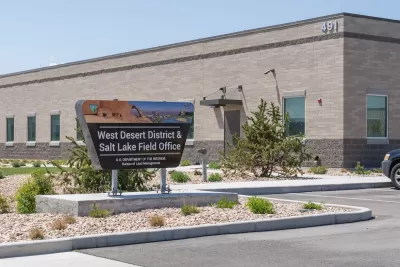The U.S. owns more than 650 million acres of public lands, and it has the power to sell or lease limited parcels for affordable housing. But mass disposal of public lands, as some legislators have proposed, is not the answer.

As housing costs soar in Western communities, public lands could offer a solution for creating affordable housing while preserving outdoor spaces. But first, we must protect these lands from privatization efforts.
Mark Allison of New Mexico Wilderness Alliance explains how federal land management agencies already have tools to help address the housing crisis. For instance, The Bureau of Land Management recently sold 20 acres of public land to Clark County, Nevada. The county is using the land to build 200 affordable homes. And Summit County, Colorado, partnered with the U.S. Forest Service to lease land to build 162 income-restricted rental units.
However, these opportunities face threats from privatization campaigns. Utah's governor recently sued to force federal “disposal” of public lands, while additionally proposed legislation would make it easier to sell public lands to private developers by counting them as having no value in federal budgets.
Allison argues that strategic use of the U.S.'s 650 million acres of public lands could help create affordable housing in high-cost Western communities without sacrificing the outdoor access that makes these places special. The key is using existing federal tools to identify appropriate parcels for development while conserving others.
FULL STORY: Public Lands Can Help Us Tackle the Housing Crisis in the West

Planetizen Federal Action Tracker
A weekly monitor of how Trump’s orders and actions are impacting planners and planning in America.

Maui's Vacation Rental Debate Turns Ugly
Verbal attacks, misinformation campaigns and fistfights plague a high-stakes debate to convert thousands of vacation rentals into long-term housing.

San Francisco Suspends Traffic Calming Amidst Record Deaths
Citing “a challenging fiscal landscape,” the city will cease the program on the heels of 42 traffic deaths, including 24 pedestrians.

Amtrak Rolls Out New Orleans to Alabama “Mardi Gras” Train
The new service will operate morning and evening departures between Mobile and New Orleans.

The Subversive Car-Free Guide to Trump's Great American Road Trip
Car-free ways to access Chicagoland’s best tourist attractions.

San Antonio and Austin are Fusing Into one Massive Megaregion
The region spanning the two central Texas cities is growing fast, posing challenges for local infrastructure and water supplies.
Urban Design for Planners 1: Software Tools
This six-course series explores essential urban design concepts using open source software and equips planners with the tools they need to participate fully in the urban design process.
Planning for Universal Design
Learn the tools for implementing Universal Design in planning regulations.
Heyer Gruel & Associates PA
JM Goldson LLC
Custer County Colorado
City of Camden Redevelopment Agency
City of Astoria
Transportation Research & Education Center (TREC) at Portland State University
Jefferson Parish Government
Camden Redevelopment Agency
City of Claremont





























